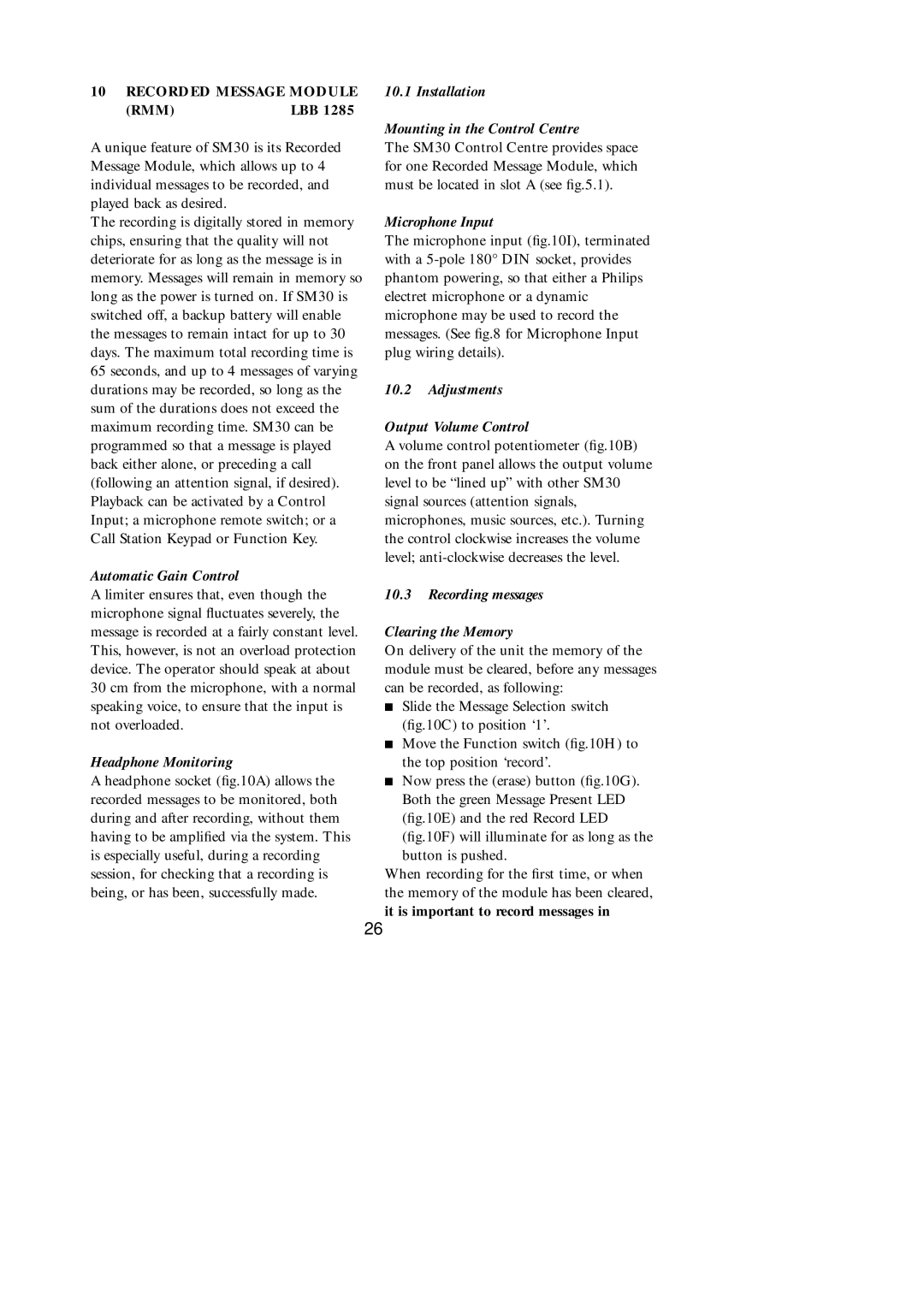
10 RECORDED MESSAGE MODULE
(RMM) | LBB 1285 |
A unique feature of SM30 is its Recorded Message Module, which allows up to 4 individual messages to be recorded, and played back as desired.
The recording is digitally stored in memory chips, ensuring that the quality will not deteriorate for as long as the message is in memory. Messages will remain in memory so long as the power is turned on. If SM30 is switched off, a backup battery will enable the messages to remain intact for up to 30 days. The maximum total recording time is 65 seconds, and up to 4 messages of varying durations may be recorded, so long as the sum of the durations does not exceed the maximum recording time. SM30 can be programmed so that a message is played back either alone, or preceding a call (following an attention signal, if desired). Playback can be activated by a Control Input; a microphone remote switch; or a Call Station Keypad or Function Key.
Automatic Gain Control
A limiter ensures that, even though the microphone signal fluctuates severely, the message is recorded at a fairly constant level. This, however, is not an overload protection device. The operator should speak at about 30 cm from the microphone, with a normal speaking voice, to ensure that the input is not overloaded.
Headphone Monitoring
A headphone socket (fig.10A) allows the recorded messages to be monitored, both during and after recording, without them having to be amplified via the system. This is especially useful, during a recording session, for checking that a recording is being, or has been, successfully made.
10.1 Installation
Mounting in the Control Centre
The SM30 Control Centre provides space for one Recorded Message Module, which must be located in slot A (see fig.5.1).
Microphone Input
The microphone input (fig.10I), terminated with a
10.2Adjustments
Output Volume Control
A volume control potentiometer (fig.10B) on the front panel allows the output volume level to be “lined up” with other SM30 signal sources (attention signals, microphones, music sources, etc.). Turning the control clockwise increases the volume level;
10.3Recording messages
Clearing the Memory
On delivery of the unit the memory of the module must be cleared, before any messages can be recorded, as following:
■Slide the Message Selection switch (fig.10C) to position ‘1’.
■Move the Function switch (fig.10H) to the top position ‘record’.
■Now press the (erase) button (fig.10G). Both the green Message Present LED (fig.10E) and the red Record LED (fig.10F) will illuminate for as long as the button is pushed.
When recording for the first time, or when the memory of the module has been cleared, it is important to record messages in
26
